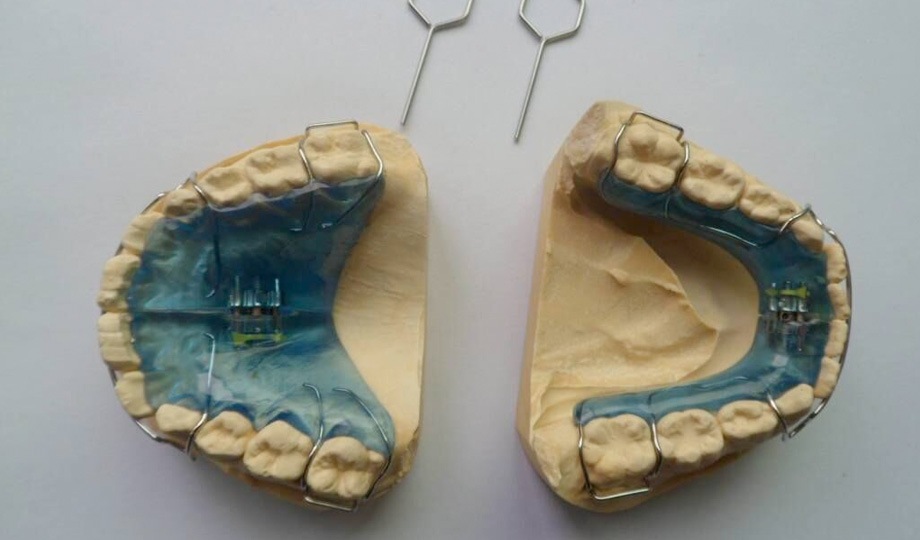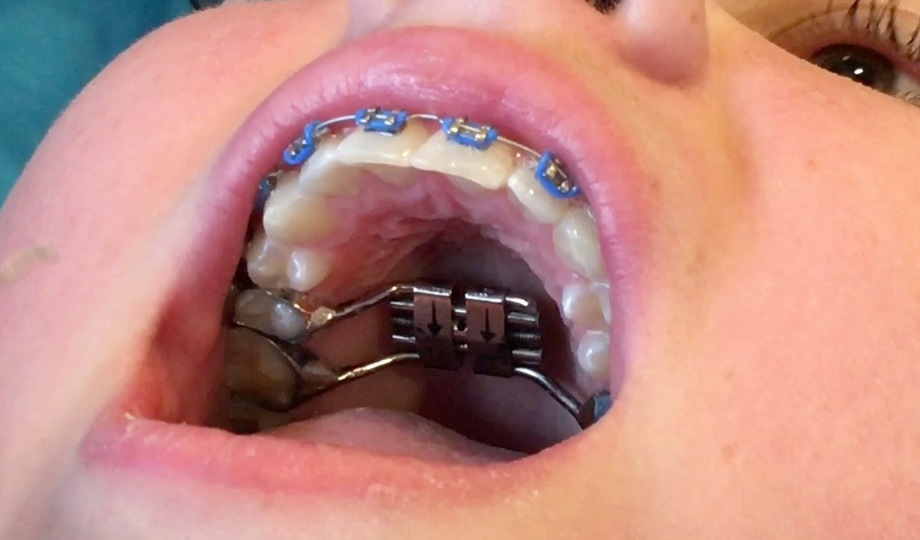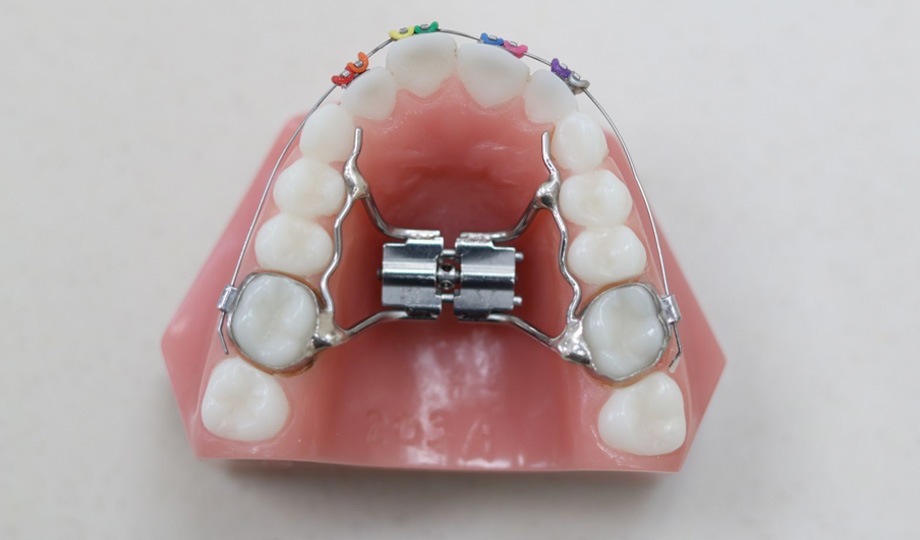For some patients, we need to address growth discrepancies in the jaws to ensure we achieve the most ideal result when straightening the teeth.
In some cases, this involves the use of an orthodontic expander called a rapid palatal expander or Hyrax. This appliance helps us address constriction of the upper jaw.
When is a palatal expander needed?
We use palatal expanders to widen the upper jaw in order to adequately accomodate all of the permanent teeth and to ensure the upper and lower jaws fit together properly.
For some patients, a narrow upper jaw may be the result of genetics, while for others, environmental factors may have contributed to the abnormal jaw growth. Children who suck their thumb or use a pacifier for an extended period of time may negatively impact their jaw growth. Mouthbreathing, rather than breathing through the nasal cavity, can also result in a narrow upper jaw.
How does a palatal expander work?
In our Norwalk and Westport offices, we used fixed palatal expanders, meaning the device is always in the mouth. It cannot be removed except by an orthodontist.
We use a digital scan of the patient’s teeth to design and fabricate custom expanders for each patient.
The expander is typically supported by the back molars. We will place the spacers a few days prior to inserting the expander to assure there is enough room for the expander to fit around the supporting molars. We like to give our patients a week to get accustomed to having the appliance in place before expansion begins.
The palatal expander works by turning an expansion screw. We demonstrate to the patient’s parents how this works, and ask that patients begin by doing this twice a day – once in the morning and once at night. Then, we will monitor the progress to determine if additional expansion is needed.
On average, we can complete expansion in about two to three weeks, depending on how narrow the upper jaw was originally. Once we’ve reached final expansion, the expander remains in place for about three to four months. This allows the jaw to stabilize and bone to fill in.
Is the palatal expander painful?
It can take a few days to get used to having the new appliance in place. Patients find that they will create excessive saliva in the beginning, so it can be helpful to practice speaking to get used to this. It will go away as your mouth adjusts to having the expander in place.
We recommend over-the-counter pain medications, such as Tylenol or Ibuprofen, to relieve any discomfort in the first few days. It can be helpful to stick to soft foods, such as yogurt, pasta, mashed potatoes and soups in these first few days, as well.
Types of Braces Treatment
- Caring For Braces
- Carriere Correctors
- Clear Braces
- Common Problems
- Permanent Retainers
- Removable Retainers
After activating the expander, I now have a gap in my front teeth. Why?
This is natural and not a cause to worry. During the expansion process, a gap will likely develop between the upper front two teeth. This is actually a sign that the expansion is working.
Your upper jaw actually consists of two bones that are joined together in the middle of your palate. As we expand the jaw, we are separating these bones. This then opens up the space between front teeth. This will be corrected when we finish out your Norwalk orthodontic treatment at Westwalk Orthodontics Group.
What age is ideal for an expander?
Treatment is always provided on an individual basis and depends on several factors; the eruption of permanent teeth, skeletal discrepancies, the bite and others. However, we do need to use an expander before jaw growth is complete and the suture, or area where the two parts of your upper jaw meet, fuses together. Then, we cannot use an expander alone to achieve the width we need. Once fused, an oral surgeon may be needed to re-open the suture to allow for expansion.
Frequently Asked Questions
What is a palatal expander?
A palatal expander is an orthodontic appliance we use, typically in children, to widen or narrow the upper jaw. Patients may have jaw developmental problems, and, to help them with proper development and achieve ideal function, we may use devices, such as a palate expander, to move jaw bones into an ideal position.
Why is a palate expander necessary?
Patients with problems of dental crowding in their early teens might benefit from using a palate expander. Please note that this device is not limited to age or one specific type of jaw malocclusion; however, we do see it used more often in cases of young patients who need help with dental spacing and who are still seeing their permanent teeth erupt.
What age is too late for a palate expander?
Even though it’s rare, palate expanders can also help adult patients. Ideally, we’d use a palate expander when the patient is aged between 5 and 16, but adults can also get treatment. The thing is that when reaching adulthood, and with the type of problems most adult patients come with, other orthodontic appliances might prove more efficient.
How many weeks do you have to be to get a palate expander?
Some patients complete this part of their treatment within three to six weeks, meaning it’s considerably shorter than treatments with traditional orthodontic appliances. Part of this is explained by the fact that younger ages and growing bones make treatment much faster.







